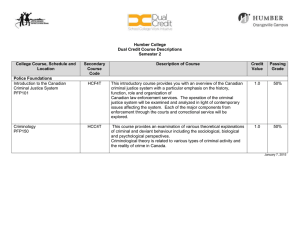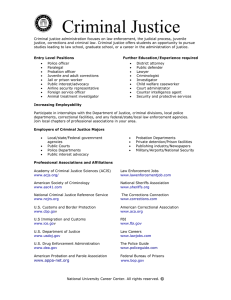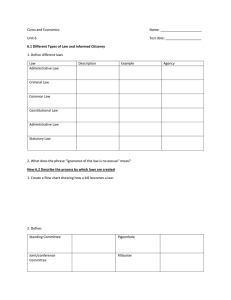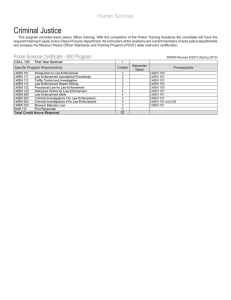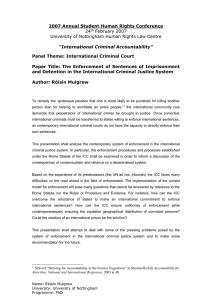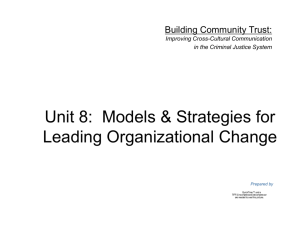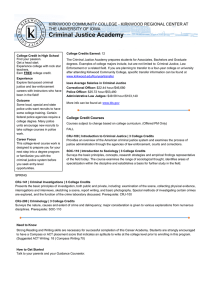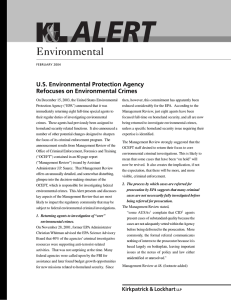Student Name________________________________Instructor Name_________________________________ High School or Vocational Center_________________________________________Grade________________
advertisement
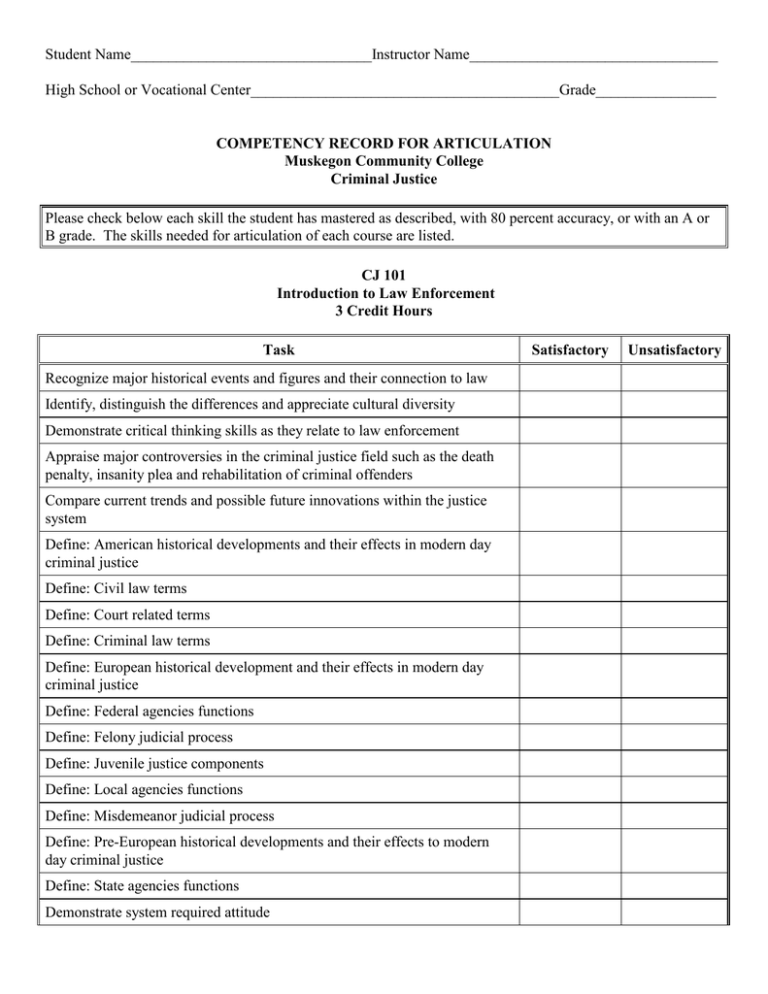
Student Name________________________________Instructor Name_________________________________ High School or Vocational Center_________________________________________Grade________________ COMPETENCY RECORD FOR ARTICULATION Muskegon Community College Criminal Justice Please check below each skill the student has mastered as described, with 80 percent accuracy, or with an A or B grade. The skills needed for articulation of each course are listed. CJ 101 Introduction to Law Enforcement 3 Credit Hours Task Recognize major historical events and figures and their connection to law Identify, distinguish the differences and appreciate cultural diversity Demonstrate critical thinking skills as they relate to law enforcement Appraise major controversies in the criminal justice field such as the death penalty, insanity plea and rehabilitation of criminal offenders Compare current trends and possible future innovations within the justice system Define: American historical developments and their effects in modern day criminal justice Define: Civil law terms Define: Court related terms Define: Criminal law terms Define: European historical development and their effects in modern day criminal justice Define: Federal agencies functions Define: Felony judicial process Define: Juvenile justice components Define: Local agencies functions Define: Misdemeanor judicial process Define: Pre-European historical developments and their effects to modern day criminal justice Define: State agencies functions Demonstrate system required attitude Satisfactory Unsatisfactory Task Satisfactory Unsatisfactory Describe: the appeal process Describe: the grand jury operational functions Explain: Criminal justice interdependence Explain: police licensing concepts Identify: citizen system involvement Identify: constitutional police restrictions Identify: correctional operational functions Identify: correctional systems agencies Identify: court agency goals Identify: court operational functions Identify: court systems agencies Identify: government organizational structure Identify: law enforcement principle purpose Identify: law enforcement agency components Identify: law enforcement operational functions Identify: local government functions Identify: plea bargaining operation process Identify: police agencies interdependence Identify: POST organizational structure Identify: prosecution operational functions Identify: prosecution systems agencies Identify: state government functions Identify: system major goals Identify: U.S. Constitution functional purpose and the need for minority representation in law enforcement Posses a fundamental knowledge of system dynamics and system analysis Instructor’s Signature___________________________________________________Date_________________ CJ 101 2
